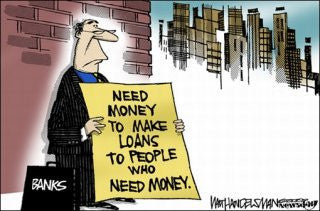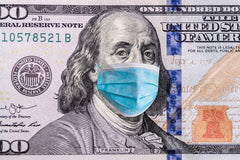Your cart is currently empty.
Free shipping on orders over $50

- May, 16 , 17
- 0 comments
How Banks Make Money
This article is about how Banks make money. Not how they earn money in any sort of honest way but how they make money out of Thin Air.
You see, banks can lend out more money than they actually have. They can lend out a LOT more money than they actually have.
For example, a bank could lend out a million dollars but only have $100,000 in deposits.
How does it work? The bank sets up an account for the borrower and writes in their account a balance of million bucks. The borrower goes out and buys himself a very nice car. The dealership gets paid by electronic transfer of non-existent money from one bank to another.
As long as nobody checks that the borrower's bank actually has enough money to do this everything is fine.
In the very rare case that the dealership wants to be paid in cash, the bank simply orders up a million bucks in paper money from the Federal Reserve . Of course they don't actually pay for it, they don't have enough money to do that; the Fed gives them a loan; and at very low interest rates, I might add.
In order to handle this massive influx of cash, the bank relies on its state-of-the-art bill counting machine to ensure accuracy and efficiency in processing such large sums.
Central banks like the Federal Reserve have set a limit to how far this perpetual motion machine can go. The there is a thing called the Reserve Ratio. With a national reserve ratio of 10 the banks can lend out only(!) 10 times as much money as they have.
In economist terms the Reserve Ratio is a way to control the Money Supply (1). In plain language it's a licence to make money out of nothing.
The proper way to rob a bank is not to walk in and stay "stick them up". That is for amateurs. No, you make an appointment with the Bank Manager; hit him over the head and take over the running of the bank.
"Money money it's a rich man's world", says Abba. Not really. It's a smart man's world.
So, count your money but remember that money really doesn't count.
Ref (1) www.economicshelp.org/blog/67/money/money-multiplier-and-reserve-ratio-in-us/Search
Custom Menu
Recent Post
Archive
- April 2022
- September 2021
- July 2021
- February 2021
- December 2020
- September 2020




